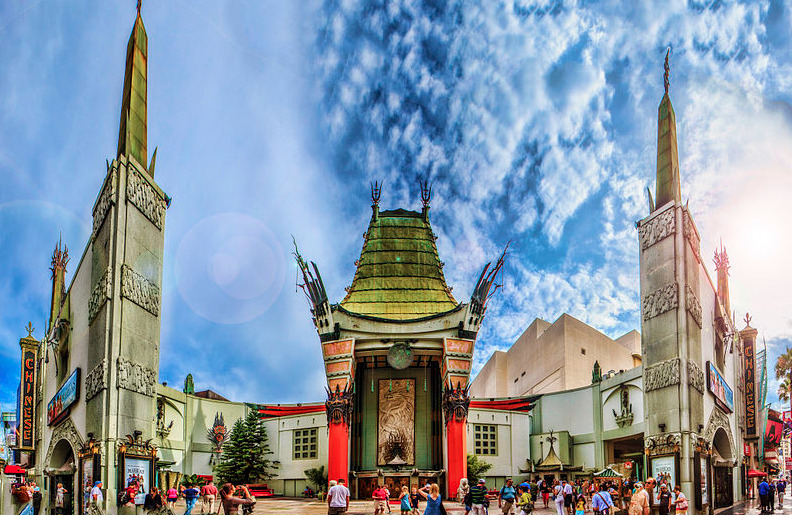
As more people move into the middle class in China, disposable income spent on goods and services will only increase. But disposable income extends far beyond goods and services, and to date some 300 million more people in the world are ready to start spending money on entertainment. In a 2013 study by Ernst & Young, the firm noted “spending on entertainment and recreation [in China]jumped from $350 billion in 2010 to $547 billion last year.” Because American content – whether television, film, or music – is universally revered, huge opportunities await US Media and Entertainment (M&E) companies in a region capable of hauling in more than $10 billion in value by 2017. Hollywood’s most successful films are reliably hitting the $100 million revenue mark at the Chinese box offices.
Well aware of these opportunities, American film studios have made China a top priority marking a dramatic shift in perceived foreign markets only a few years ago. Notably, Bank of America-Merrill Lynch Global Research released a study this year detailing these opportunities and reaffirmed that “from 2007-12, China’s box office has improved at a compound annual rate of 47% to $2.7 billion […] fueled by a 30% CAGR in screens […] The top 10 Hollywood films in China generated a steady 30% share of the 2012 box office.” Breaking down these statistics, 26% of the China box office goes to local films – roughly 560 Chinese domestic films get made every year – and 150 of those are released theatrically with only 70 becoming notable box office contributors. These statistics not only reflect the expanding local production industry in China, but also their preferential regulatory treatments standing as a major entry barrier for US film studios.
Along with preferential treatments, an import quota on Hollywood films makes for fierce competition among US studios. Before 2012, China capped the number of US films to be released in mainland cinemas at 20; only last year was President Obama able to get China to increase their quota to 34.
Looking to 2030, however, it is unlikely that China’s film quotas will disappear all together. With the Hollywood quota already maxed out for 2013, China’s domestic films have been able to flourish. As of November 25, 2013, Chinese films hit the $3 billion revenue mark with prospects of another late boost as cinemas rush for a photo year end finish marking a remarkable shift from a considerably more lackluster balance sheet just over a decade ago with FY2002 revenues below $164 million.
While still a burgeoning industry in China – America’s $385B industry dwarf’s the PRC’s $73.2b – Ernst & Young predicts Chinese M&E will grow 17% annually for the next five years. En masse injections of private capital have been the major driver, truly enabling the industry to soar. In 2013 alone, China built over 4,500 new movie theaters (over 10 per day) increasing their countrywide total to over 17,600.
A major bankroller in the industry has been Wang Jianlin who is Chairman of property giant Dalian Wanda Group Corp. along with being China’s richest man. Earlier this year he bought America’s second largest movie theater chain, AMC, for $2.4 billion. Following that, in November Wanda announced their plans to build China’s own version of Hollywood with a $4.9 billion to $8.2 billion investment in a mega-entertainment center. The Qingdao Oriental Movie Metropolis, or “Chollywood” as it is being called, will include 20 massive studio lots and is being supported by A-list stars such as John Travolta, Catherine Zeta-Jones, Nicole Kidman and Leonardo DiCaprio. With signing agreements with four top global talent agencies, by 2030 we could see a substantial “brain drain” from Hollywood into China. Because the US is unquestionable global hegemon in the entertainment world, the demand for American expertise in content, storytelling, marketing and distribution is very high in China. Yet, there is a great deal of doubt surrounding Wanda’s project.
China’s politicians have made clear that conceptual films portraying China in a negative light will have no market on the mainland, as highlighted in World War Z’s recent debacle with the PRC. In one of the first cuts of Brad Pitt’s zombie movie, there was a scene where his character concluded the zombie apocalypse originated in China. Fearing governmental backlash, Paramount producers changed the origin to South Korea. In sum, China wants non-controversial films that pay tribute to Chinese life and culture. However, even if Wanda’s “Chollywood” project is completed, and in 2030 China’s film industry becomes large enough that China no longer needs import quotas to achieve their growth objectives, the government’s intense and seemingly unrelenting relationship with censorship will become an impediment to future growth.
As stated above, out of the 560 films made per year in China, only 70 make it to the box office. Much of this is due to strict government examination. All 34 Hollywood films allowed in China also go through close inspections to ensure alignment with government principles. To mitigate potential issues with their films, US studios are increasingly re-editing content, and with some going so far as to shoot entirely different versions for a PRC release.
A recent example is Relativity Media’s 21 & Over, a story about a Chinese-American medical student besieged by parental-induced anxiety who chooses to alleviate exam stress by partying at a fraternity house. Before production began, Relativity Media told producers there would be two movies made, one for an American audience and one for a Chinese audience. With a vastly different storyline from the original plot, the movie’s director Jon Lucas said in an interview: “21 & Over, in China, is sort of a story about a boy who leaves China, gets corrupted by our wayward, Western partying ways, and goes back to China a better person […]” Hollywood is an industry where the realm of creative possibilities is endless. Studios have always strived to balance creativity with profits; movies like Gravity prove that you can have both, no matter how expensive. However, this question of balance is taken to new heights when looking ahead to 2030 and the inevitable interconnectedness that will define the China-Hollywood relationship.
At what point is the creative process impacted by geopolitical constraints that define China’s film market? The multi-billion dollar question facing Hollywood today is whether film studios can fully tap into the China market without marginalizing the creative process that should, and hopefully will continue to, define the industry.







